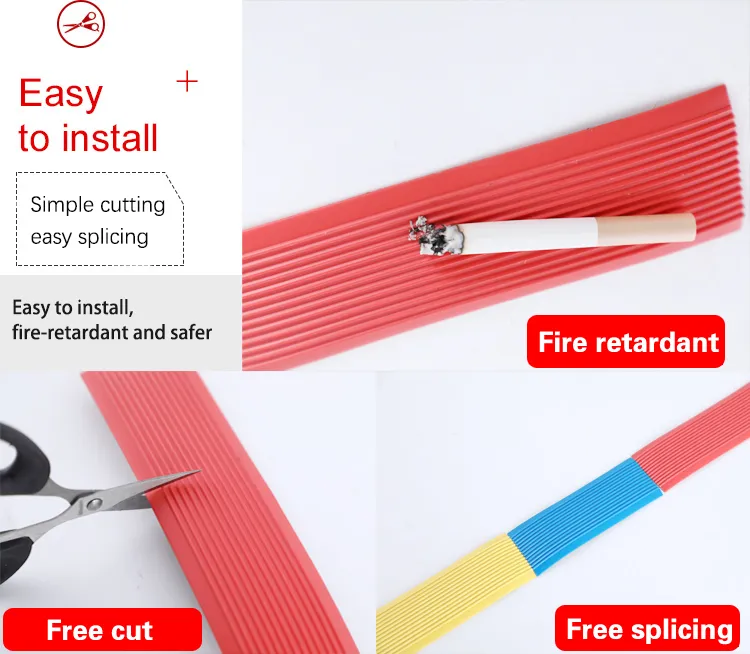Automotive Window Weather Seals for Enhanced Protection and Performance
The Importance of Car Window Weather Seals
When it comes to maintaining the integrity of your vehicle, many drivers overlook a crucial component the car window weather seal. These often-neglected rubber strips play a vital role in ensuring a comfortable and safe driving experience. In this article, we'll delve into the importance of car window weather seals, how they work, and what you can do to maintain them.
Understanding Weather Seals
Car window weather seals, commonly referred to as window seals or weatherstripping, are designed to provide a barrier between the outside elements and the interior of the vehicle. They’re typically made of rubber or foam, and they are installed around the windows, doors, and sometimes even the sunroof. Their primary function is to prevent water, air, dirt, and noise from entering the vehicle, ensuring a snug fit that enhances comfort and safety while driving.
Functions of Weather Seals
1. Water Resistance One of the most critical functions of weather seals is to prevent water from leaking into the cabin. This is especially important during heavy rain or in areas with high humidity. A compromised seal can lead to water damage, mold growth, and unpleasant odors in your vehicle.
2. Noise Reduction Weather seals help create a barrier against outside noise, providing a quieter and more pleasant driving experience. If you find yourself being disturbed by wind noise or road sounds, it may be time to inspect your weather seals for wear and tear.
3. Temperature Control Weather seals also assist in maintaining the vehicle's climate control. They prevent hot or cold air from entering the cabin, allowing your heating and air conditioning systems to work more efficiently. This not only enhances comfort but can also improve fuel efficiency by reducing the workload on your vehicle's climate control system.
4. Dust and Debris Prevention Over time, dust, pollen, and other debris can find their way into your car, making it less sanitary and less comfortable. Effective weather seals help keep these irritants out, contributing to a healthier driving environment.
Signs of Wear and Tear
car window weather seal

Like any other component of your vehicle, weather seals don’t last forever. They are subject to wear and can become brittle or cracked due to exposure to sunlight, temperature fluctuations, and general aging. Here are some signs that your weather seals may need to be replaced
- Visible Cracks or Holes Inspect the rubber for any noticeable damage that could compromise its effectiveness. - Water Leaks If you notice dampness inside your car after rain, it’s a clear indicator of seal failure. - Increased Noise Levels A sudden increase in outside noise levels can signify that your seals are no longer functioning correctly. - Drafts and Air Leaks Feeling drafts while driving can indicate that the seals are not providing a tight fit.
Maintaining Weather Seals
To prolong the life of your car window weather seals, regular maintenance is key. Here are some tips to keep them in top shape
1. Clean Regularly Use a mild soap solution and a soft cloth to clean the seals, removing dirt and debris that can cause wear over time.
2. Inspect Frequently Regularly check your seals for any signs of damage or wear. Early detection can save you from more costly repairs later on.
3. Lubricate Apply a silicone-based lubricant or rubber conditioner to the seals occasionally. This can help keep the rubber supple and prevent cracking.
4. Replace When Necessary If you find cracks or holes in your seals, consider replacing them promptly to avoid further damage to your vehicle’s interior.
Conclusion
Car window weather seals are more than just a protective barrier; they are essential for ensuring a comfortable, safe, and efficient driving experience. By understanding their importance and taking steps to maintain them, you can enhance your vehicle’s performance and lifespan. Regular inspections and proper care will go a long way in preserving these crucial components and keeping your ride smooth and enjoyable.
-
Under Door Draught Stopper: Essential ProtectionNewsJul.31,2025
-
Garage Door Seal and Weatherstrips for ProtectionNewsJul.31,2025
-
Edge Banding Tape for Perfect EdgesNewsJul.31,2025
-
Table Corner Guards and Wall Corner ProtectorsNewsJul.31,2025
-
Stair Nose Edging Trim and Tile Stair SolutionsNewsJul.31,2025
-
Truck Bed Rubber Mats for Pickup BedsNewsJul.31,2025
-
Window Weather Stripping for Noise ReductionNewsJul.29,2025